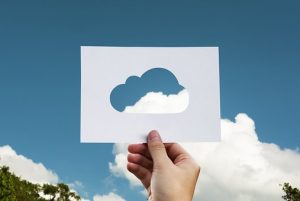This is the second in a series of blog posts with our colleagues at Urban Economic exploring how we can recover the economy to build a green and smart society.
We open the conversation in:
- The Green Recovery Opportunity
- How connectivity, data and digital enables a sustainable recovery and growth
- The sustainable energy opportunity.
- The market opportunity for sustainable mobility
- Financing green recovery initiatives
Why is ubiquitous connectivity good for the environment?

Royal Society workshops in 2019 on digital technologies and human transformations identified optimism that data and digital technologies would bring innovative solutions to tackle climate change and enable societal transformation, but also growing concerns about the environmental impact of digital systems. This push-pull, will it do more harm or will it save us, percolates through conversations on the impact of digital technologies and its role in a more sustainable world.
First, the drawbacks. There is a cost to the environment in manufacturing, shipping and operating devices and network components. Devices are manufactured and processed using energy; raw materials need to be extracted and used. When thinking about the use of sensors and phones and the like, the topic turns to rare earth metals, and questions about the environmental destruction and degradation necessary to obtain these metals. Can any application outweigh such costs?
Life Cycle Assessment (LCA) studies attempt to put the impacts of take, make, use and disposal across the lifespan of the device or application, so that the environmental costs can be weighed properly against the environmental benefits enabled by that device. It will always be true that devices use resources in their makeup and to manufacture, ship and when they are actually in use; using reclaimed or recycled materials in fabrication can help offset this, as well as improving energy efficiency. Ericsson and Nokia have made great contributions in understanding where their ‘hotspots’ are for environmental impact and therefore process improvement. But overall many LCA studies conclude that the use phase dominates whether a device or network has an overall positive or negative impact on the environment.
The use phase, or what we use it for, is therefore critical. For the means to justify the ends, what are the ends we are pursuing? Those are pretty exciting.
What are digital technologies good for?
The positives are in the transformational potential of digital technologies. What do we mean by that? Digital technologies can help us understand. We can then act on that intelligence.
Data collected and acted on in real time has been shown to make significant operational improvements. Deep Mind, Google’s AI, reduced the data centre cooling bill by 40% in 2016. It did this through AI and Machine Learning (ML), using a system of neural networks trained on different operating scenarios and parameters within the data centres, creating a more efficient and adaptive framework to understand data centre dynamics. It spotted trends over two years that could be applied to all of Google’s data centres. The potential of ML to revolutionise how we get intelligence from data is vast.
How else can digital technologies help? At the scale of your own house, boiler monitoring saves costs (only using when neeeded; improving efficiency using less energy to produce the same amount of heat; flagging the need for preventative maintenance saving more expensive and invasive fixes and preventing down time). At the housing association scale, this can not only save significant carbon emissions but also help to address fuel poverty.
Actuating or acting on information is the next step in smart technology and represents an exciting opportunity for housing management. For example, a central control system could deliver the heat required by the household with no waste. Sero Homes has a vision for ‘Hassle Free Homes’, where they take responsibility for delivering low carbon heat when customers request it, controlling the amount (and price) of heat and electricity.
Exciting applications
Air Quality

Data on air quality can be combined with other datasets to provide insights into relationships and to inform operations and public health campaigns to drive change. Are the campaigns to encourage people to walk to school actually working? What about tackling idling cars or trucks outside schools or during deliveries? What about gathering evidence to show what’s doing the most harm (light good vehicles doing deliveries, or the factory with an environmental permit to operate), acting on it, and checking whether or not it is working? All this needs as close to real time information as we can get.
Logistics

Car plants run on logistics. Efficiency is crucial. The right part needs to be in the right place at the right time or production grinds to a halt. Perform Green is proud to be a project partner in the 5G Create project at Nissan in Sunderland, which will use connected automotive logistics to distribute parts across the Nissan plant, the largest car plant in Europe. Efficiency is better for the environment as well; reducing waste and encouraging a circular economy to make the most of the resources we have in the value chain is critical for the future.
For applications like these to work we need 1) connectivity, 2) data, and 3) analysis and action.
Connectivity
Connectivity is the key enabler that makes the above applications a reality. Without the ability to get data where it’s needed, transformation cannot happen. Connectivity is vital, with the mode of connection and communication determined by the use case. Do you need it at your highly distributed employee’s fingertips instantly? What is the volume of data? Things like images and videos are more bandwidth intensive. What response is needed? In 5GRIT, the tractor would take video of the soil as it approached and send the images to the computer in a university. The computer would analyse and determine what nutrients were needed, send back instructions to the sprayer on the tractor, and by the time the tractor hovered over the patch in question, the correct pattern of nutrients would be deposited. Not only does this save time and labour but could make land more productive. However, the application needed a vast amount of data to be transferred back and forth. (This could be a good application for edge-computing).
Connectivity principles enable digitalisation and the transformative potential of digital. We usually recommend the following:
- A High-Level, local or regional Digital connectivity strategy – promoting high speed connections to enable working, shopping, socialising and schooling. This will also underpin the management strategies for the environment and social care e.g. telehealth and telemedicine.
- Street level – street-level communications should be planned in at the neighbourhood level to support advanced communications which underpin many operational benefits for street level such as sensors for bins, road gritting, etc.
- Fabric first approach – in housebuilding, the electrics and plumbing are laid in the first fix. We would argue laying connectivity down is also essential at this point. Homes will be equipped with USB as well as three point plugs, with access points to add additional assistive technology through the life of the house and the owners’ changing life stages.
Data
In order to get data, we need to be measuring. We need to measure the right things, and appropriately. If we festoon the world with sensors we get rich information, but at a cost to the environment per device that might not outweigh the resulting savings, not to mention privacy and aesthetic concerns. The trick is to measure what matters.
Data governance is important as well, with the basic message being ‘be transparent.’ Recent Royal Society policy studies identified the conditions needed to support the safe and rapid deployment of technology to help us protect the environment; the forms of governance of data use needed to create an environment of careful stewardship; and the role that technology can play in helping address governance challenges. Local governments seeking to collect data need to do so in a sensitive and transparent way, in dialogue with the population. This is the foundation of a smart society.
Analysis and Action
Great! We have the data. Now what? Combining datasets in ways that can be easily understood and communicated is more complex than it sounds. Local authorities might have data on air quality (3-6 months previous), traffic (right now) and estimated counts of deliver vehicles (1-2 months out of date), but they will all be held by separate departments and collected for different purposes. Combining datasets requires a unified platform, ones that big tech companies are salivating the sell and councils are leery of buying in case it locks them in (and locks locally-grown tech solutions out).
Once that is sorted, the decision makers need to have confidence in the data and kept up to date with the progress of programmes and interventions. Leaders and councillors need to be able to trust what they are seeing to make a quick decision about it. Transparency is important but councils are also wary of opening Pandora’s box. When data are made open it invites the general public into the situation and also invites them to ask the council what they are doing about it.
Conclusion
Overall, digital technologies have a role to play in helping us humans make the most of the natural resources we have extracted and maximising the best resource of all – time. Efficiency will only take us so far. Digital technologies can enable a full societal transformation toward a more sustainable future. Whether that is through AI finding patterns we haven’t noticed yet by searching through dense and rich data, we need connectivity to bring it together. With connectivity, we will be able to gather the information and data to analyse and act on it.
In our next post, we will explore the sustainable energy opportunity and how this will contribute to recovery and growth.
Urban Economic and Perform Green are teaming up to work on maximising economic recovery and increasing regional prosperity in the post pandemic environment. We will present our latest thinking explored in the recent white paper from Urban Economic: The Air that we Breathe: A playbook for the Urban Post Pandemic Environment. We will explore 3 strategic pillars to maximise economic and social returns:
- Green Infrastructure
- Energy Efficiency
- Digitisation
In the post-pandemic environment now, more than ever, city and regional leaders need to maximise their growth potential and be confident that the strategies and solutions they apply have a high and measurable return on investment. Recovery requires broad-based fiscal stimulus and strategic investment: jobs need to be created and new areas of growth identified and pursued.
The governments that choose to implement a sustainable post-pandemic recovery will become the benchmark for cities of the future, reaping the gains of early investment through a stronger economy and a healthier society.
